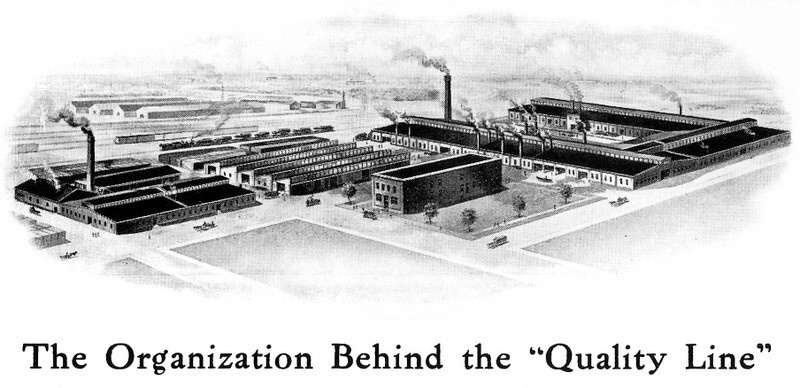 |
| Images courtesy of Brian Szafranski |
George White was born in Devonshire, England. As a young man he learned the blacksmith trade at his father's wagon-building shop and had he not decided to visit Canada on his wedding trip, a name prominent in the annals of Canadian industry might be missing.
Arriving at London, Ontario, Canada in 1857, George White was delighted with the young country and decided to stay and open up a blacksmith and general repair shop in the fast growing city. However, he was soon enticed with the prospect of owning a hundred acres of land and the next few years found him farming a few miles north of London. White's knowledge of iron working became too well known and his services were so much in demand that he decided to move back to the city and reopen shop. Business was good and his small shop grew steadily and soon became known as the Forest City Machine Works.
During his farming days George White became conscious of the great need for a suitable agricultural steam engine and since he had the shop and tools, he began to work on plans for the manufacture of such an engine. Several small steam engines were designed and built. When he was satisfied with his engine, he set about acquiring the necessary boiler making machinery. Finally, sometime in the early 70s, his first portable farm engine was completed, to be followed by many hundreds more known from coast to coast in Canada as White's Threshing Engine.
In March 1889, George White took his four sons into the business and renamed his company, George White & Sons Ltd.
In the mid 90s, steam traction engines were becoming popular and to meet this demand the White factory built a number of traction engines of the return flue type using the U.S. Huber as a
pattern. The George White engines were all simple and were built plain and sturdy, with no fancy fittings.
Previous to 1898 only engines were built. That year the firm absorbed the plant of the Macpherson Co. of Fingal, Ontario, which had been building the Challenge separator. This machine,
already highly developed and well known, rounded out the White output advertised as "The First Quality Line," Self feeders and rear-cutting attachments were later added and the Challenge was built in all sizes to suit the eastern and western trade.
When the demand came for gas tractors, the firm became Canadian agents for the All Work kerosene tractor. Later the John Deere tractors were handled for many years and then the B. F. Avery agency was secured. George White had nine sons and three daughters. After finishing
school, several of the boys started to work in their father's factory. Upon completing his apprenticeship, each son was absorbed into an executive position in the firm which became known in 1880 as The George White & Sons Co.
The last new machine was built in 1924, but engines were repaired and rebuilt for many years after. However, unlike many early threshing machinery manufacturers, The George White & Sons Co., Ltd., is still going strong, building a variety of farm power machinery.
From the Encyclopedia of American Steam Traction Engines, 1977
Information Sources:
- Norbeck, Jack, Encyclopedia of American Steam Traction Engines, Crestline Publishing Inc, Glen Ellyn, Illinois, Pg. 265.
- Steam Power on the American Farm by Reynold M. Wik, 1953 page 254
- Steam Engines & Threshers by Mike Hand, 2012 pages 34-38
- The Steam Tractor Encyclopedia by John F. Spalding & Robert T. Rhode, 2011 pages 348-354